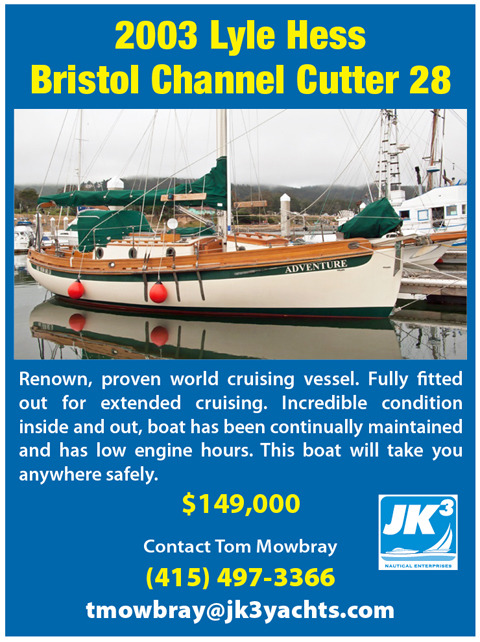
A Research Vessel in a Bottle, Part I
Some stories you just can’t make up. This week, we serendipitously found a message-in-a-bottle of sorts. Or rather, a message-in-a-boat.
Latitude’s Mitch Perkins was taking an evening stroll on Rodeo Beach at Fort Cronkhite on Wednesday night when he spotted something in the water. "It looked like a small vessel being tossed about in the waves near the bottom end of Elephant Rock," Mitch said. "But I couldn’t quite make out what it was in the twilight. As I got closer, it got smaller. The four-foot craft was complete with mast, sail, bulb keel, an engine, solar panels and a red flashing light. On the bow were the words ‘Ocean Research’ and on its transom was a plaque that read: Edgar; [email protected]."
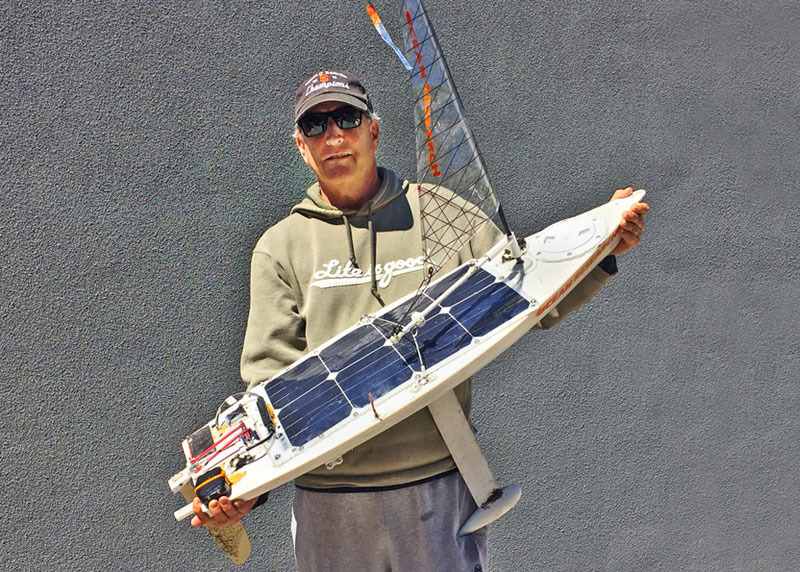
©Latitude 38 Media, LLC
In fact, the boat was a customized RC Laser — they’re about three and a half feet long and a foot wide, with a bulbous keel that draws just over a foot. This particular RC Laser had a short mast and small sail, and was not your average remote control boat. Edgar was custom built to take temperatures and pH levels.
"It was obvious that it was some kind of research vessel, and that it was being tracked. It was also clear that if it got into the wrong hands or remained on the beach, it might never serve its intended purpose. So in keeping with being a good sailing Samaritan, I lugged Edgar (which felt like it weighed 40 pounds) down the beach, plopped him on my Harley, and tried to tape him onto the back with electrical tape."
But the boat didn’t exactly sit well on the back of a motorcycle (and electrical tape isn’t necessarily the best lashing — we’ve got to get Mitch a roll of duct tape). Once the beach was empty, Mitch decided to stash the boat in the bushes, and return the next day with his car.
"Trying to find the owner of the mini-research vessel, my Internet research garnered zero results but put me into a wiki-coma for the night. At first light I went to rescue Edgar and brought him back to the Latitude 38 office in Mill Valley. We weren’t back ten minutes when the phone rang . . . It was Edgar’s rightful owner — M.J. Sanner. He tracked our exact coordinates. (Being the citizen scientist that he is, M.J. [or Matthew] was able to determine that Edgar was in our office as opposed to the 7 Eleven, or the 2 a.m. Club.)"
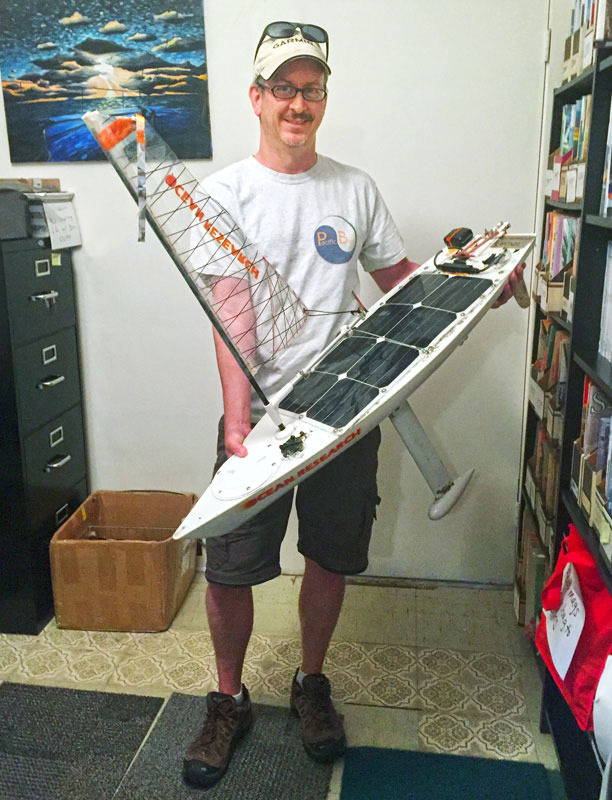
©2017Latitude 38 Media, LLC
On Monday, we’ll tell you more about the exciting work Matthew is doing with his small, custom built sailing drones.
Accident Questions Accuracy of Navionics Charts
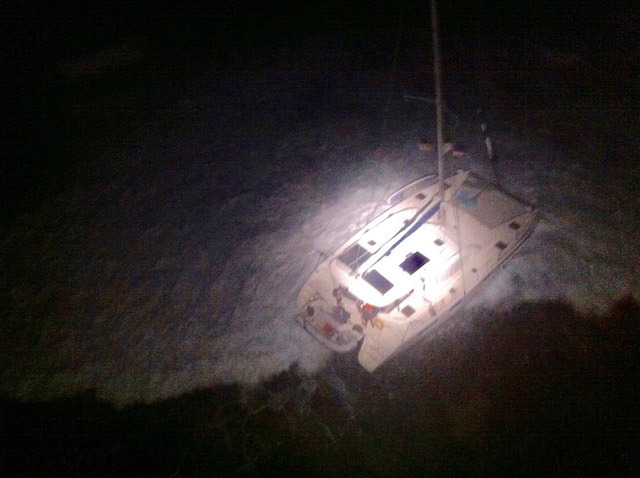
©2017Latitude 38 Media, LLC
The Ventura-based Leopard 46 catamaran Tanda Malaika went onto a reef while nearing Huahine in the Society Islands in the darkness of July 18. Skipper Danny Govatos had been monitoring the Navionics chart and the depthsounder when the latter suddenly went from showing a depth of 180 feet to 0 feet. The Navionics chart reportedly didn’t show a reef. There were six family members aboard the cat: Danny, his wife Belinda, and their children Jude, Mycah, Aidan and Emma.
"We all felt Tanda Malaika violently hit the reef," wrote Belinda in her blog. "Massive waves [reportedly eight to 10 feet] raised her port hull to about a 75- degree angle, then dropped her with an incredible force, back down onto the reef. I saw Mycah being thrown from port all the way to starboard, down the stairs of the starboard hull, and forward onto the floor in her cabin."
As it turned out, the entire family was rescued — in two trips — by a French Navy helicopter. There are numerous dramatic photos of the nighttime rescue on their website that convey just how chaotic and dangerous the situation was (you can also read the rest of Belinda’s gripping account of the events).
Miraculously, nobody was seriously hurt.
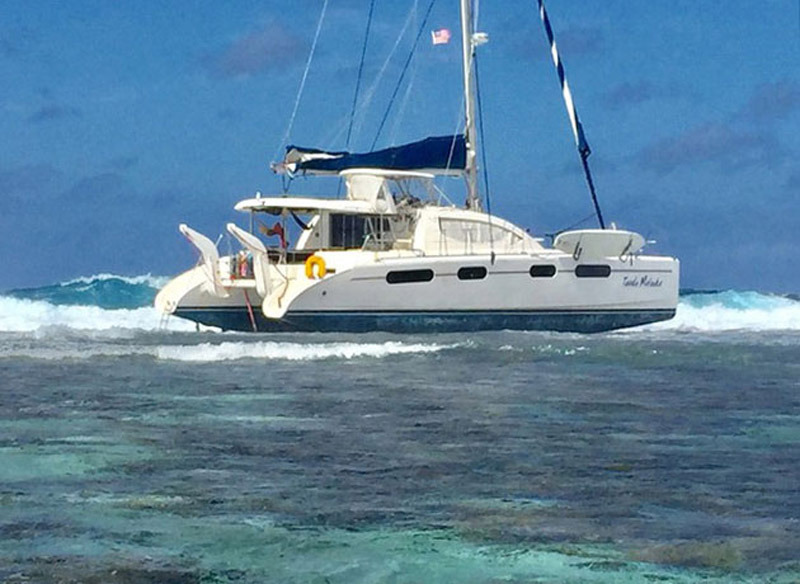
©2017Latitude 38 Media, LLC
When the family was safe on land again, two members of the French Navy asked what had happened. Belinda told them they’d hit a reef that didn’t appear on their chart. Belinda reports that the French asked if they had been using a Navionics chart.
"When I said ‘Yes’," wrote Belinda, "one man shook his head and said that at least five boats a year that were using Navionics charts end up on those reefs."
Belinda was taken to a large map on the wall and asked if a specific place was where the family’s cat had run aground. Belinda said that to the best of her knowledge, it was. She was then shown two places on the map, one being where Tanda Malaika went aground, and a second spot, between them, where most of the wrecks had occurred.
If you’ve cruised the South Pacific and used Navionics charts, we’d very much like your opinion of their accuracy. If they are inaccurate, even in just a few spots, mariners need to know about it.
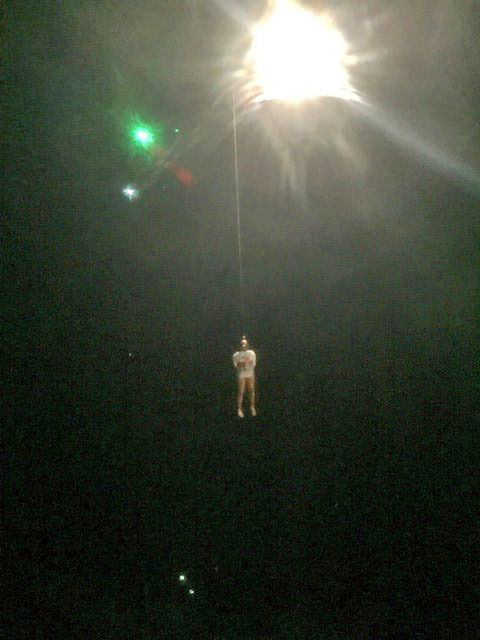
©2017Latitude 38 Media, LLC
As for the Govatos family, they pretty much had all their worth in the boat, which they purchased two years ago in the Caribbean in order to travel the world and do humanitarian work. Unlike a lot of cruisers, they initially had insurance. But they report that when they got to the Galapagos, their insurance carrier dropped them, claiming they didn’t have enough experience. By that time they’d sailed 12,000 miles.
Back in the day, the owners of a shipwreck could simply walk away and that was that. In modern times, almost all countries demand that the owner pay to have the pollutants removed and the wreck taken away. It only took a couple of days for it to become clear that the Tanda Malaika was no longer a candidate for salvage, and needed to be towed out to deep water and sunk.
Alas, even that is going to cost money, as the salvage company charges $5,000 an hour. They won’t do anything until they get a $25,000 deposit, and estimate the entire job might cost $75,000.
Which raises the question, what will the French do if the Govatos family doesn’t have the money to pay for the removal? After all, they no longer have debtor’s prisons, and haven’t used the guillotine since 1976.
As the boat has been stable on the reef for the last nine days or so, many cruisers have come to help the family take everything of value off the boat. It’s a terribly sad scenario, as the sum of a boat is so much more than the parts.
If you’d like to help this family, this is their GoFundMe address: www.gofundme.com/helprescuethetribe.
Ad: Bristol Channel Cutter 28 For Sale
Why Sign Up for the SoCal Ta-Ta?
There are lots of reasons for signing up for the September 10-16 SoCal Ta-Ta Rally from Santa Barbara to Catalina, starting with the fact that it’s the only ‘Reggae ‘Pon Da Ocean’ sailing event in the world. And that it’s a mini version of the Baja Ha-Ha, with two nights at Santa Cruz Island, one night at Channel Islands Harbor, one night at Paradise Cove, and two nights at Two Harbors, Catalina.
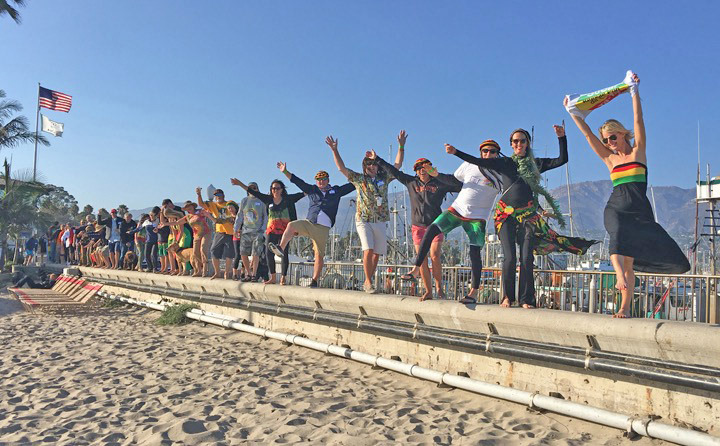
©2017Latitude 38 Media, LLC
The Ta-Ta must be fun, because over half of this year’s entries have done it one or more times. More than a few of the entries have done all four Ta-Ta’s to date.
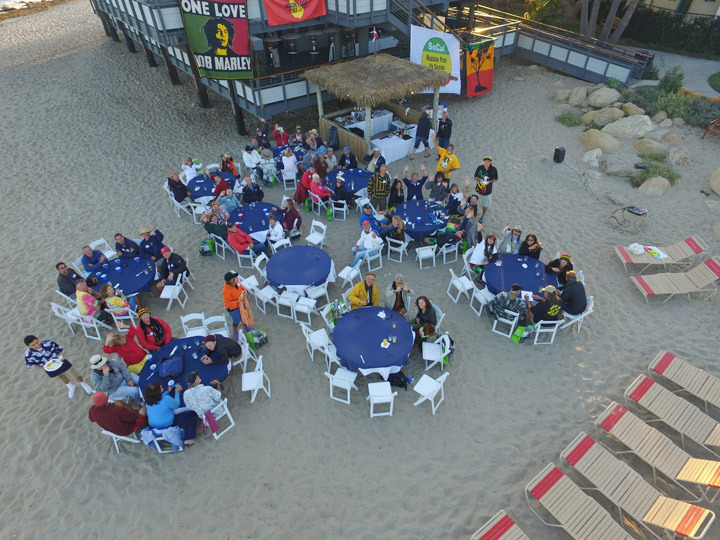
©Latitude 38 Media, LLC
We’ll let some photos do the rest of the talking. But remember to sign up soon as berth limitations mean we have to have a smaller fleet than in previous years.
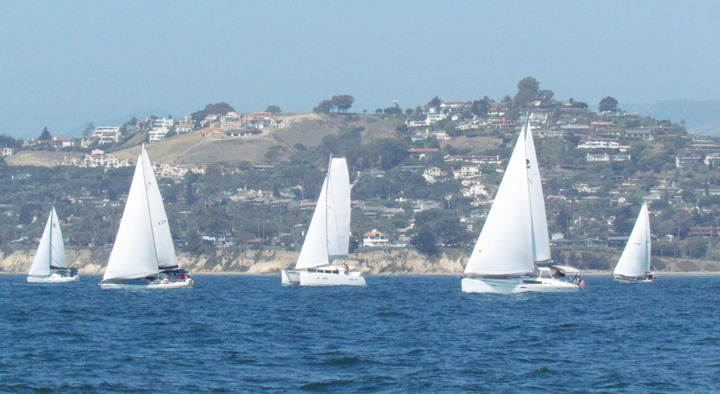
©2017Latitude 38 Media, LLC
If you want a reserved berth in Santa Barbara, the entry deadline is August 10, and you will have to get your boat information and berthing payment to us by August 15. Miss either deadline and we’re sorry to say you’ll be out of luck on a reserved berth.
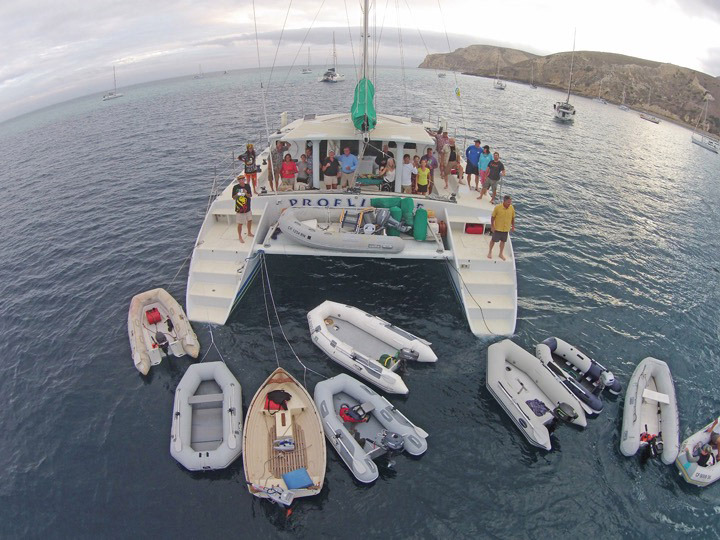
©2017Latitude 38 Media, LLC
Just so everybody is clear on this, the only way you can get a reserved berth is through the Ta-Ta. Even though we have to do the administrative work and collect the money for the harbor, the Ta-Ta gets nothing from it. We do it because we love you!

©2017Latitude 38 Media, LLC
If you miss the August 10 deadline, or want to sign up after August 10, it may be possible depending on the size of the fleet. However, you cannot get a reserved slip in Santa Barbara, and it’s very possible you would have to anchor out. Potential late entries should email the Grand PooBob at [email protected].
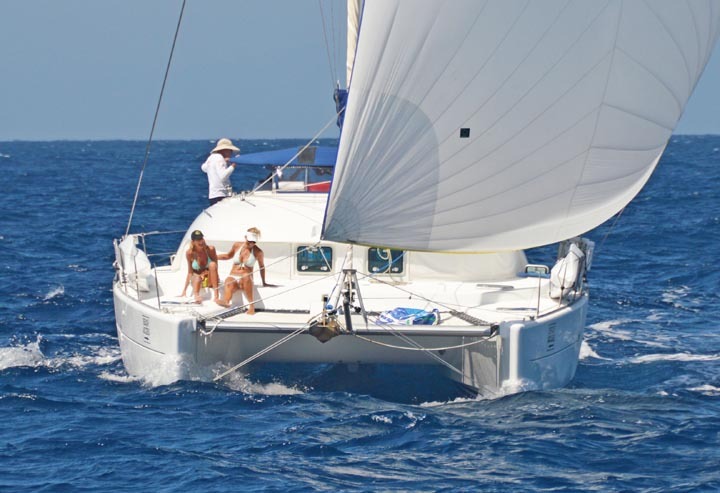
©2017Latitude 38 Media, LLC
TO EVERYONE — NO MATTER IF YOU’LL BE GETTNG A RESERVED BERTH OR NOT, DO NOT CONTACT THE YACHT HARBOR UNTIL YOU ENTER THE HARBOR! Thank you.

